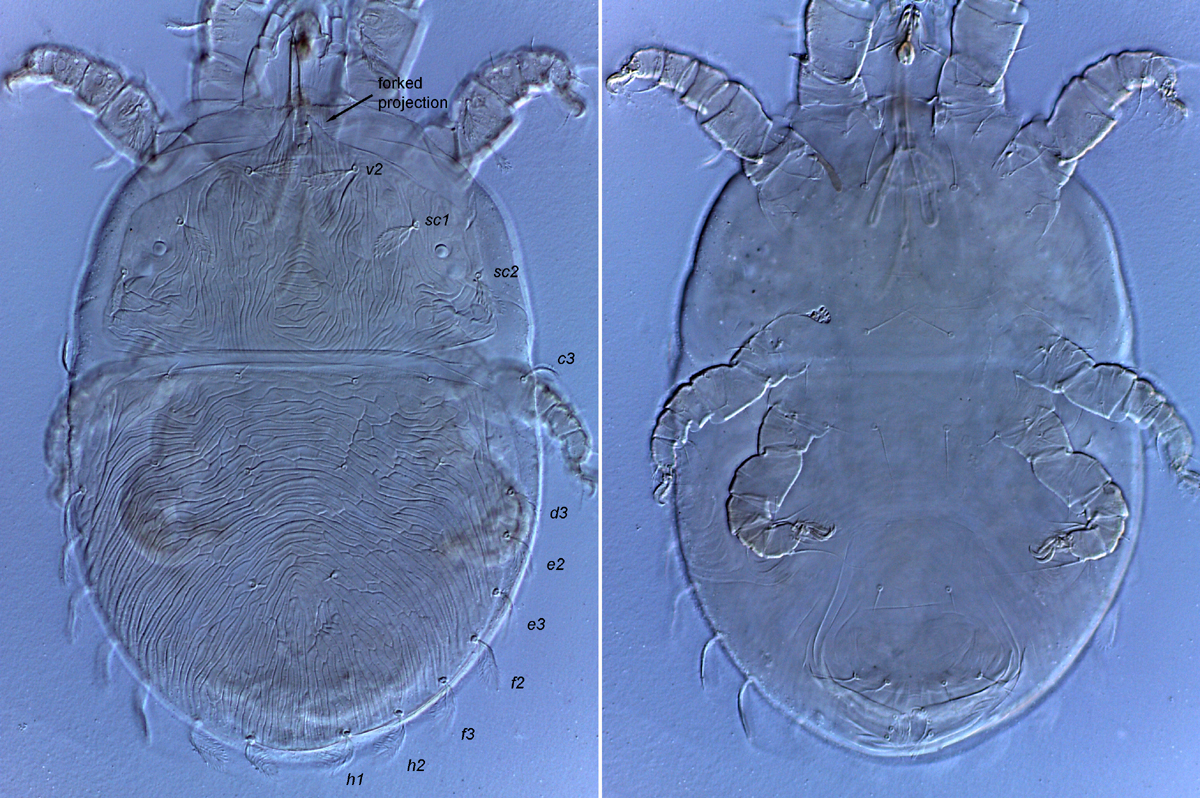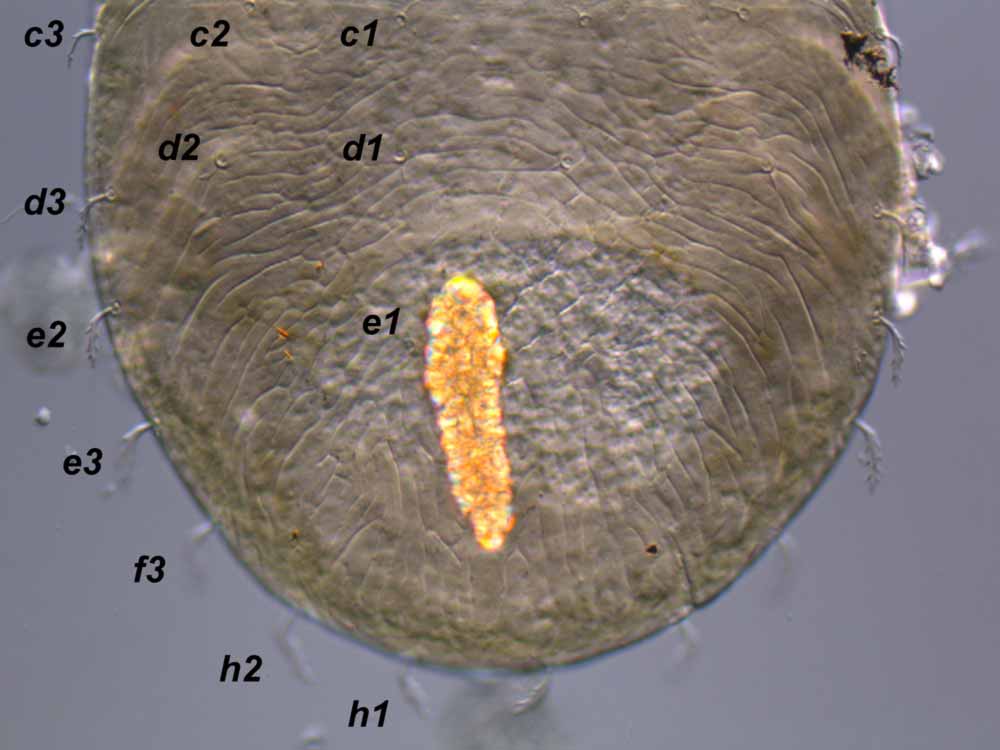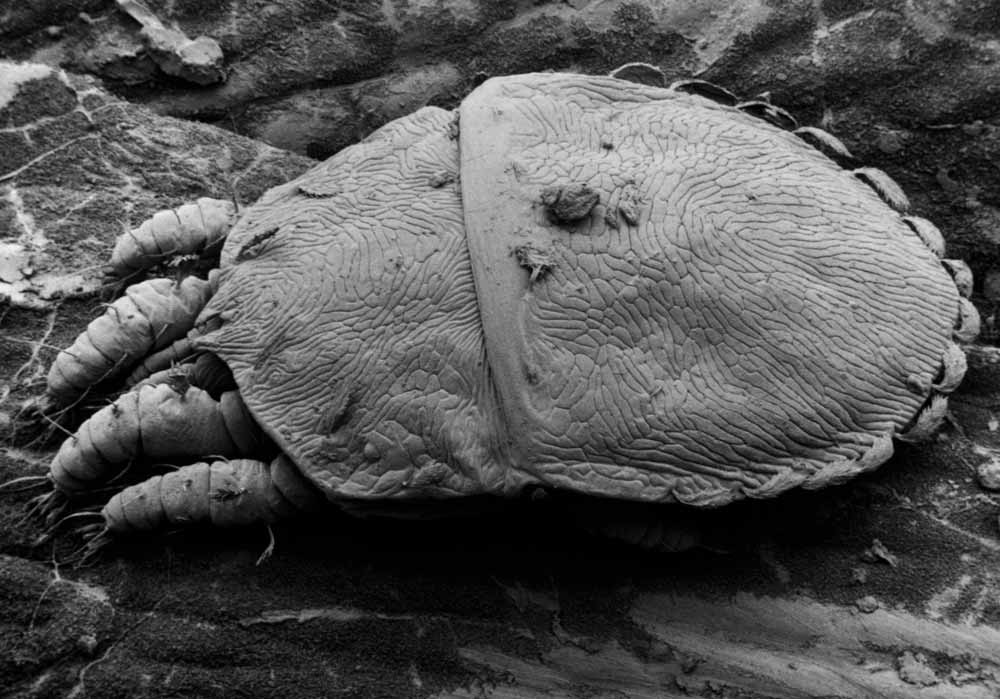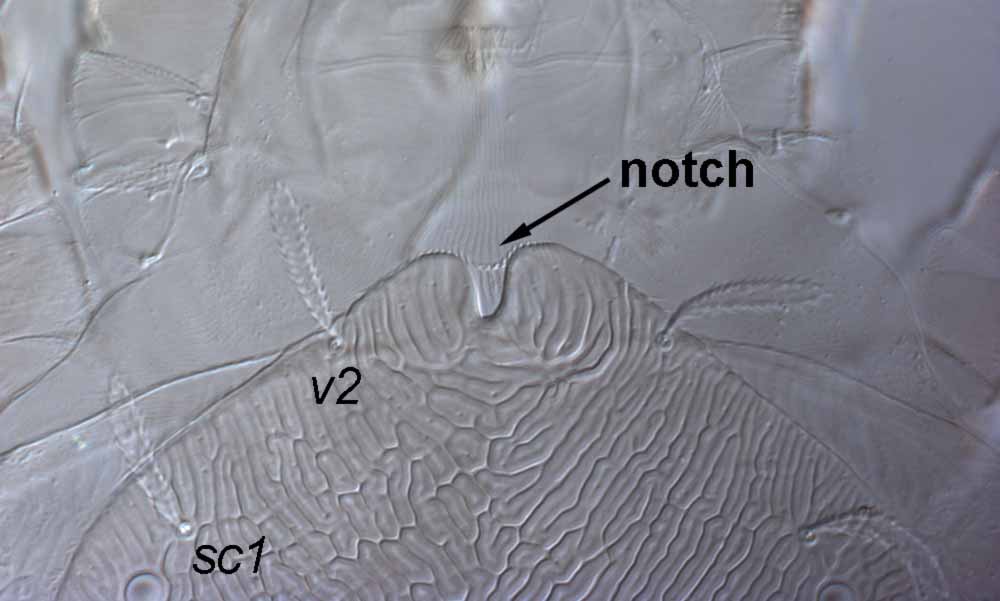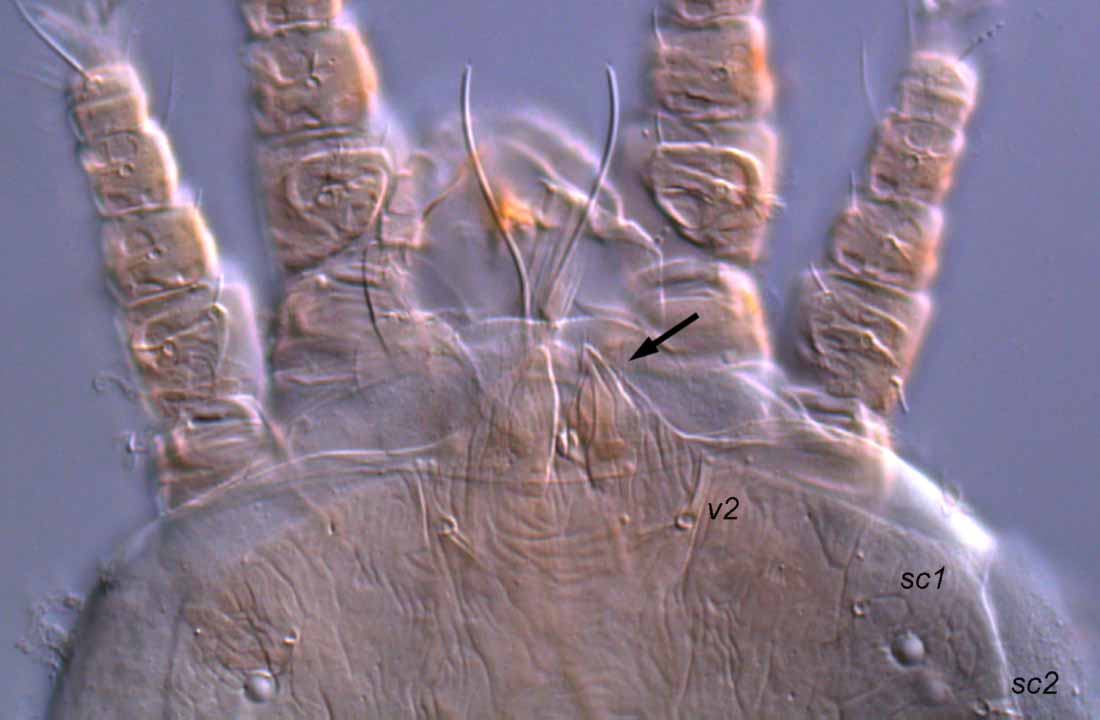Pentamerismus
|
Fig. 1. Pentamerismus abnormis adult female, dorsum and venter (paratype), with f2 present. |
|
Fig. 2. Pentamerismus sp. female dorsum and venter, with f2 present. |
|
Fig. 3. Pentamerismus oregonensis female dorsum, with f2 absent. |
|
Fig. 4. Pentamerismus sp. female dorsum (image: Eric Erbe, USDA). |
|
Fig. 5. Pentamerismus sp. female dorsum (image: Eric Erbe, USDA). |
|
Fig. 6. Pentamerismus wardo sp. nov. Seeman & Beard, female anterior dorsum, indicating notch. |
|
Fig. 7. Pentamerismus sp. female anterior dorsum with forked projection. |
|
Fig. 8. Pentamerismus sp. female anterior dorsum with divided projection. |
|
Fig. 9. Pentamerismus sititoris sp. nov. Beard & Seeman, female posterior venter. |
|
Fig. 10. Pentamerismus wardo sp. nov. Seeman & Beard, female venter, with detail of genital region (ps setae obscured by extruded oviduct). |
Key characters
- either full complement of dorsal present (Figs. 1, 2, 4) or f2 absent (Fig. 3)
- e2
and f2 (when present) aligned along lateral margin with d3, e3, f3, h1, h2 (Figs. 1, 2, 3) - h2 not elongate
- dorsal setae often with different shapes - e.g. central setae short and tapered versus lateral setae leaf-shaped (Figs. 1, 2, 4)
- anterior margin of prodorsum variable: with a notch anterior to v2 (Figs. 5, 6); with a forked or divided projection (Figs. 2, 7, 8)
- ventral, genital and anal plates weakly developed, membranous (Figs. 1, 2, 9, 10)
- ventral and genital plates often indicated by change in cuticle (Figs. 1, 2, 10)
- metapodal plates often developed, laterad setae ag (Figs. 9, 10)
- 3 pairs ps setae (Fig. 9)
- 5 segmented palp
Similar taxa
Aegyptobia - setae e2, f2 not inserted on lateral margin
Number of species
over 20
Authority
McGregor
Distribution
World wide; Australia recently included (Beard, Seeman & Bauchan accepted Zootaxa).
The most diverse regions are the Nearctic (5 spp.), Western Palearctic (5 spp.) and African (3 spp.).
Hosts
Mainly Cupressaceae, with few species from Casuarinaceae, Cistaceae, Taxaceae, Thymelaeceae, Ulmaceae, Zygophyllaceae.
Colour
Commonly red when alive
Remarks
Several species of Pentamerismus and Aegyptobia have been described with only 2 pairs of ps setae, and once this is confirmed these species should be placed in the genus Phytoptipalpus. For example, Pentamerismus collinus and Aegyptobia albizae, A. parcus, A. sonhanraensis. See also Seeman and Beard (2011).


